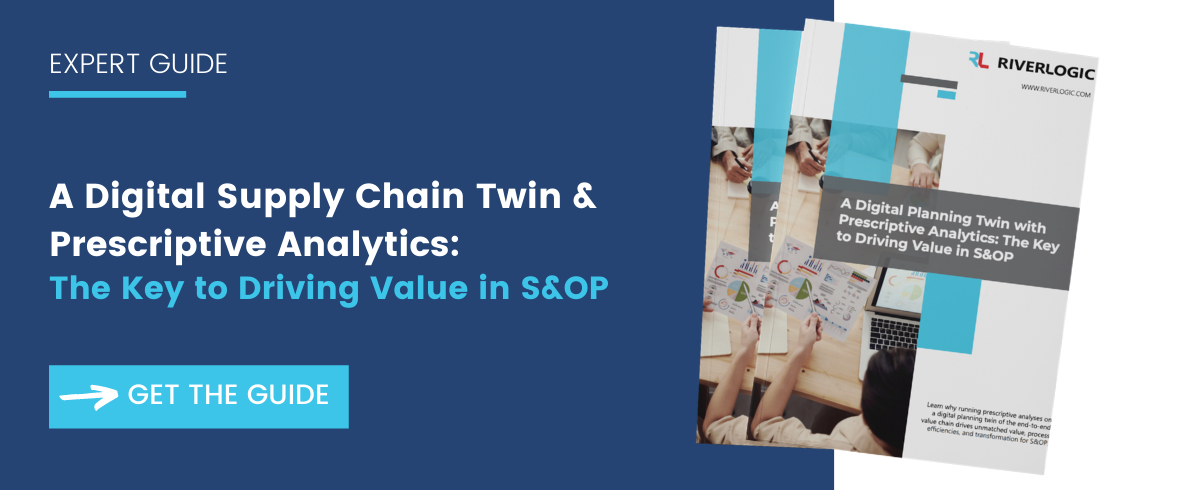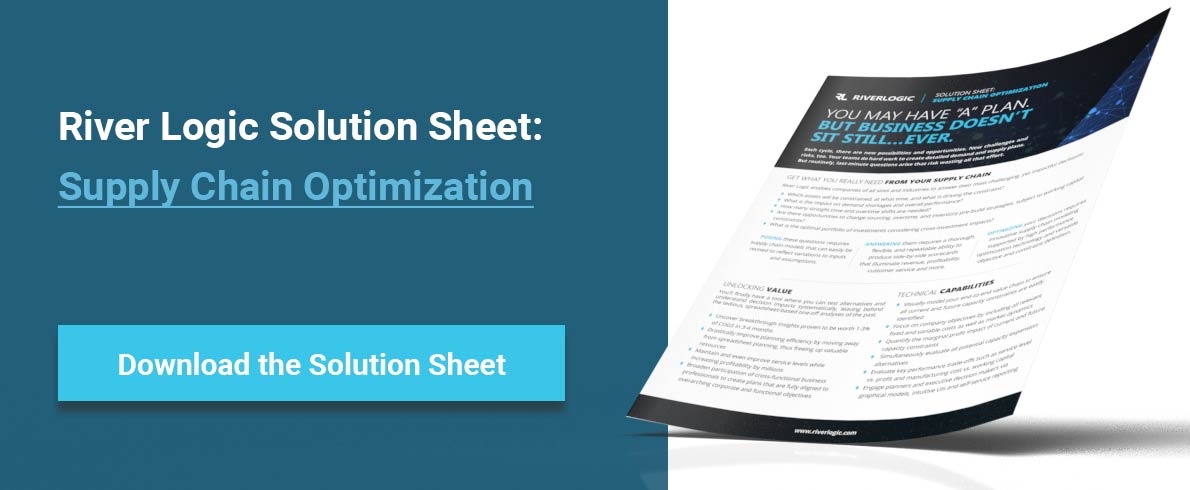Only then can you appreciate the difference between conventional supply chain analytics tools and supply chain optimization.
What Is Supply Chain Optimization?
The definition of optimization includes words such as “fully perfect” and “as effective as possible.”
Applying this to the supply chain means finding the best possible solution to each and every supply chain problem. If this seems like a tall order, it is, and something that conventional supply chain software can’t achieve.
Granted, supply chain solutions usually incorporate some level of analytics to help improve operations, but few have the ability to determine the best solution for any scenario.
Why Is Supply Chain Optimization Important?
Supply chains are facing unprecedented problems.
Apart from increased costs, the industry is undergoing dramatic change as companies grapple with restrictions and constraints of a post-COVID world. Offshoring and lowest cost supply chain strategies that were in vogue are being rewritten. Additionally, many companies are struggling to recover from losses caused by supply chain disruption, nationally and internationally.
Knowing what’s best in a post-COVID world is crucial for supply chain survival and growth.
Using Advanced Analytics for Supply Chain Optimization
In the past, many companies discovered that optimization modeling provided them with the answers they needed. Unfortunately, these techniques, which had been around for years, were constrained by complex, unwieldy and expensive programming techniques.
This has changed.
The development of simpler programming techniques using prescriptive analytics has democratized these capabilities. Using a combination of mathematical modeling and optimization software, it’s now possible for anyone to determine the best or optimal answers to complex supply chain issues.
Here’s how it’s done.
Create a Digital Supply Chain Twin (Model)
The first step is to create a mathematical supply chain model that accurately represents the real supply chain.
In place of complex, manual programming (coding), this can now be performed by visual modeling using a drag-and-drop interface that is powered by constraint-based programming. Once complete, the model is populated with historical data to calibrate and verify that it performs exactly as the real supply chain (or value chain). Then using real-time data, the model can be queried as a digital twin, using optimization to provide insights into real-time decisions that impact future performance.

Apply Optimization Theory to Determine Answers
Once the model is validated, it’s possible to apply powerful solver software to determine optimal supply chain solutions in terms of different supply chain scenarios.
Unlike some other forms of optimization, constraint-based optimization takes real-world constraints into account to determine valid and feasible outcomes. Using prescriptive analytics solver software, it’s possible to determine the optimal or best outcome for any given set of circumstances.
Determining the Best Decisions with Supply Chain Optimization Software
The benefit of prescriptive analytics-based supply chain optimization is that decisions are made based on factual information.
This is because the model is a true and accurate representation of the supply chain. It’s possible to input known trends, constraints and restrictions, and to determine the optimal strategy to maximize supply chain performance.




